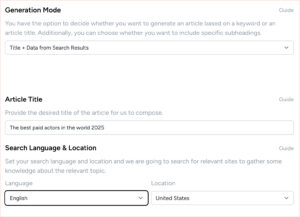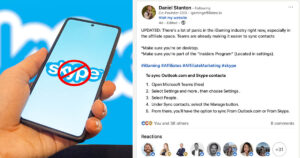In previous blog posts we’ve covered everything from optimising your website with SEO to building the ideal Shopify store. All of this will help your business stand out from the thousands of others out there, but only the English-speaking ones. What about potential clients who don’t speak English? Think about how much business you’re missing out on by not having a multilingual copywriting strategy.
Assuming that ‘most of the world speaks English’ is an incredibly naive attitude to have, and could be costing you sales. Expanding your global reach will revolutionise your business, bringing in new sales from around the world. But first you have to cross the language barrier. In this blog post we have defined actions you need to take to achieve a successful multilingual website.
1) Define your audience
Okay, so you do have to think somewhat realistically here. In an ideal world you’d have every language under the sun represented on your website, but is that feasible? We recommend you take a moment to assess your business and decide where else in the world people would have a need for it.
Do your research. Is the market in The Netherlands saturated with similar businesses to yours? Or is there a gap in the Finnish market that your product could fill perfectly? Organise your multilingual copywriting strategy around the countries where your product or business will thrive.
If your business specialises in hand-knitted hats and scarves, then maybe launching in Southern Italy isn’t the way forward. But Norway, Finland and Russia? Your new customers are waiting.
2) Localise, localise, localise
Translation alone is not enough to reach and connect with a new audience. Localisation is a crucial tactic when you’re taking your business international. Essentially, it means tailoring a translation to adapt culturally to a different country or region.
Countries have different idioms, routines and traditions. Something which makes perfect sense to a Brit might completely baffle a Finn. You need to take into account linguistic and cultural differences before launching your product abroad.
For example, say you sell umbrellas. Take the English idiom from your homepage, ‘it’s raining cats and dogs’. Simply translating this literally into another language would lead to confusion and ambiguity. You need to find the cultural equivalent for whatever language you’re translating into. In French, they would say ‘il pleut des cordes’, literally ‘it’s raining ropes’, when the rain is coming down so hard it looks like continuous lines.
Making a mistake with idioms and cultural references will reflect badly on your brand. Put in the effort to assimilate with your target culture and reap the rewards later.
3) Don’t forget about SEO translation
It’s not enough to simply translate the text on your webpages and think that’s it. There’s no point taking the time to create multilingual web pages if the content isn’t going to show up on the SERPs because you forgot about SEO.
Everything from the meta tags to the SEO titles need to be considered in your multilingual copywriting strategy. You won’t reach your international audience if your website is translated but the title isn’t. All they’ll see on the Google results page will be a title and description in English – and click away. They’ll never benefit from the hard work you put into making your product descriptions and blogs multilingual if they can’t find or understand them in the SERPs. And you will lose potential sales.
4) Know when to translate and when to start afresh
Translation, i.e. recreating existing text in another language, is ideal for homepages and product descriptions when it’s important to maintain brand identity and specifics. However, when it comes to blog posts, it might be a good idea to hire a copywriter who works in your target language.
Think about it. If all your blog posts are about issues or trends that are only relevant to the UK, there’s no point translating it into another language. Customers in Japan will hardly have any interest in the best Irish pubs in London for St Patrick’s day.
If you’re really serious about breaking into a certain market, creating original content for your new customers in their language is a great move. They can tailor fresh new content to your international audience, tapping into issues and trends that affect them directly. You’ll have an engaged international audience in no time.
5) Ask for help
If all this sounds like a lot, don’t worry. We’re not expecting you to become fluent in six languages overnight. Implementing a multilingual copywriting strategy takes work. Our copywriters at Topcontent work in more than 15 languages, ensuring top quality content across the globe.
Check out our content writing services, translation services and the languages we offer to help your business break through that language barrier. Let us help you go global!





